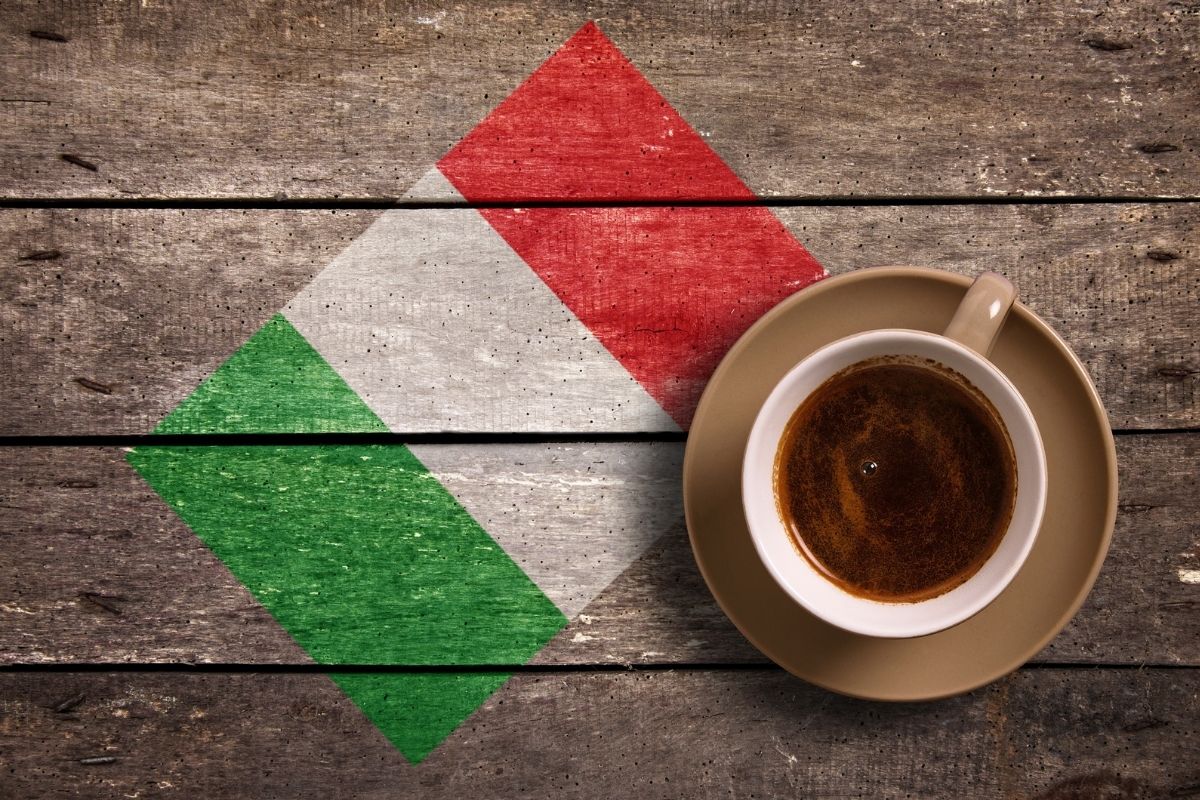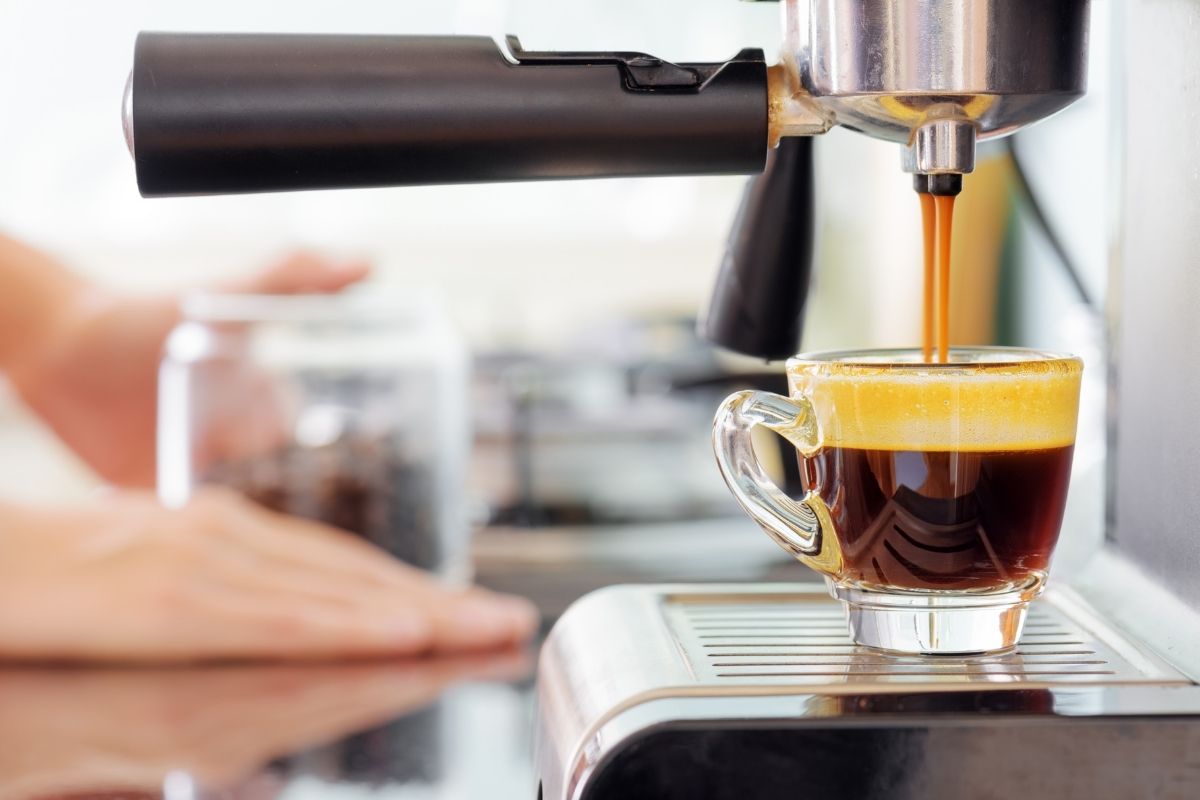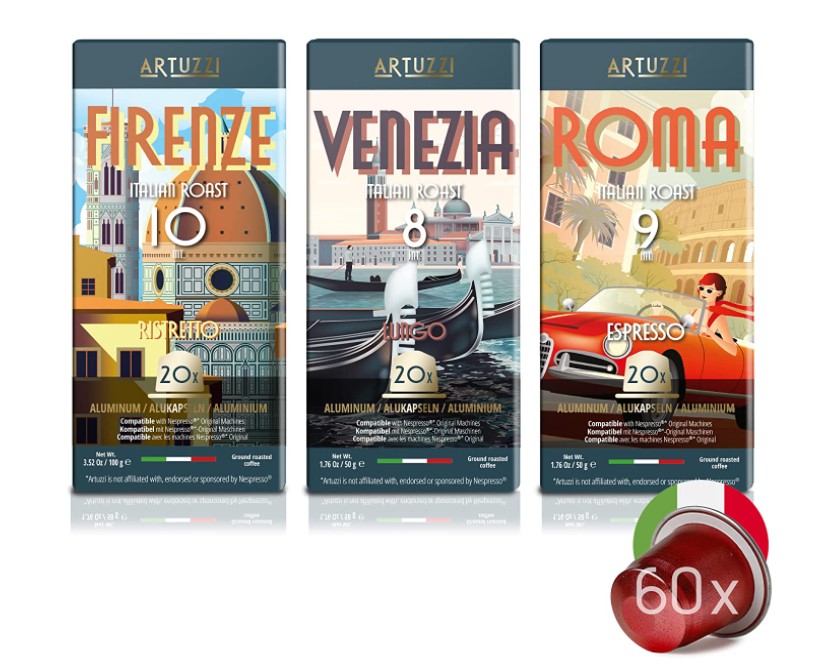When it comes to coffee in Italy, people usually think of a frothy cappuccino and or a strong shot of espresso. These two are the most common, but as we’ll see, there are many variations.
Indeed, Italian coffee culture has inspired the growth and diffusion of large coffee shop chains. The biggest of all, Starbucks, is said to have been inspired by the traditional Italian coffee bar. However, there are various aspects of the history of Italian coffee history which a lot of people may not know about.
In this article, we will be discussing everything you need to know about Italian coffee. This includes the history and different types of Italian coffee found throughout the country.
History of Coffee in Italy
It is believed that coffee first made its way to Europe in the 16th Century due to the sieges of Malta and Vienna by the Ottoman Turks. The Republic of Venice, was the first Europeans to trade coffee officially.
Then during the latter half of the 16th Century, Venetian merchants began to import coffee beans.
To begin with, coffee was sold at high prices in pharmacies. It was used as medicine to help aid digestion. However, the local wine sellers felt threatened by the popularity that was growing for coffee.
In addition to this, coffee was not approved by churchgoers in Catholic cities and states, due to the coffee coming from Arab countries.
In 1600, there was an appeal made to Pope Clement VIII for him to banish coffee altogether. However, the Pope sampled a cup of coffee and enjoyed it. Thus, he then sanctified the coffee to banish any demons from it.

Then in 1624, the first large shipment arrived in Venice, and the new word caffé was created. The fashion of drinking coffee quickly took over Venice and the rest of Italy.
During the 17th Century, coffee in Italy was sold everywhere on various stalls. Then the bottega del caffe was introduced. Which was the first prototype of the modern coffee shop that we know today.
It is believed the first coffee house in Italy opened in 1645. Yet by 1763 there were believed to be around 218 coffee shops just in Venice. Buying a lady a cup of coffee was seen as a way to show them that you loved them.
As we know, espresso is a popular Italian coffee, yet the first espresso bar machine was only invented in the 1940s. With the most famous one being created by Gio Ponti.
Try Artuzzi in 3 Styles: Roma/Espresso (normal), Venezia/Lungo (mild), Firenze/Ristretto (bold).
Espresso Pods For Nespresso Compatible Capsules Original Machines.
He took inspiration from the forms of American cars and jukeboxes. While in homes, Italians began to use the Moka Express to help make them a fresh cup of coffee in the morning.
Today, in Italy, they are seen as one of the biggest coffee roasters in the world. Both Genoa and Trieste are the two main ports for coffee.
Alongside this, northern Italy has its own coffee line known as Dersut, which is sold in various coffee shops in the majority of towns and cities.
Famous Italians That Shaped The Coffee Culture
There are various famous Italians that have helped to shape the coffee culture that we know today. The following are a couple of the most recognizable names in Italian coffee.
Angelo Moriondo invented a coffee machine that was steam operated. In 1884, the machine was patented in Italy to begin with. However, this invention was never mass-produced.
Instead, only a couple of machines were hand built for his family’s cafés in Turin.
Then we have Luigi Lavazza, who in 1895 found the company known as Lavazza in Turin. They are one of the most famous brands of coffee in the world. In addition, it is most known for its bold advertising campaigns.
Desiderio Pavoni created the La Pavoni brand. In 1905, he started to mass produce espresso machines. While Alfonso Bialetti created the Moka Espresso coffee pot which is loved by all households in Italy.
It meant they could brew their own espresso cheaply at home. Even today, this pot is still loved and found in the majority of Italian houses.
Finally, we have Achille Gaggia, who created the first seamless coffee machine. However, to begin with, this machine made the coffee very bitter. To overcome this problem, Gaggia used a piston.
Thus in only 15 seconds an espresso coffee is created to perfection. In 1948, he began to start mass-producing these machines to the world.
Different Types of Italian Coffees

There are various different types of coffees that you can try in Italy. Below we have put together some of the most popular ones.
- Espresso – This is one of the most popular and well known Italian coffees.
- Cappuccino – Cappuccinos are typically served in a very large cup.
- Americano – In Italy, an Americano will be served to you in two parts. There will be an espresso in a cup and a small jug that is filled with hot water. This way you can add as much water to suit your taste.
- Café Latte – In Italy if you want a latte, then you should order a caffe latte, otherwise you may be served a glass of milk.
- Caffe con panna – This is basically an espresso with a large amount of whipped cream on the top. You can often find them in patisseries in Italy.
In Italy, there are also some drinks that can be confused for coffee but are not. Caffe d-oroz is similar to coffee, but it is made with barley. There is also the caffe al ginseng, which is coffee mixed with ginseng extract. This creates a sweet yet nutty drink.
During the summer, there are some cold coffee drinks. These include the caffè affogato, crema al caffe and the caffè shakerato.
The Perfect Italian Cup Of Coffee
Try Artuzzi in 3 Styles: Roma/Espresso (normal), Venezia/Lungo (mild), Firenze/Ristretto (bold).
Espresso Pods For Nespresso Compatible Capsules Original Machines.
There’s a way to drink your coffee just like an Italian. It is believed that the perfect way to drink your coffee is by being stood up at the bar or counter. While standing at the counter, you can be chatting with family or friends or thinking to yourself.
It is said that the ideal cup of Italian coffee must meet these requirements. The first being that the blend is perfect and has been ground to the right consistency.
It is known that the grinder will have to be altered every day or throughout the day depending on the weather. In humid conditions, the coffee should be ground much more coarsely.
The barista needs to be able to use all the machines, including the espresso machine, effortlessly. This includes altering them and maintaining them so that it also does its job properly.
They also need to be aware of the taste and aroma of coffee so that they can be assured they are producing the correct coffee roasts and blends.
Traditionally, when it comes to roasting, Italians prefer a coffee which has been roasted to create a dark brown color. When the beans get to a high temperature, then they can begin to look oily and shiny, as all of their oils are naturally released.
These oils are imperative to the aroma of a coffee. In Italy, you will find the further you venture south, the darker your roast of coffee will become. Thus, a darker roast equals a stronger coffee.
Serving Italian Espresso

Espresso is a famous Italian drink, and they have a right and wrong way to serve it. Therefore, if you are drinking an espresso at home or at a coffee shop, there is a coffee etiquette to follow.
The most important is that you should use china cups and plates to serve the coffee. The beautiful small cups should be preheated, and the coffee only needs to fill ⅔ of the cup.
When it comes to actually drinking the coffee, you shouldn’t rush. It is suggested that before you think about sipping the espresso, you should have a drink of water. What this water does is clear your palate.
This tradition isn’t seen everywhere, but in the more traditional Italian bars, water will be served with your espresso for free.
It is up to you whether you add sugar to your coffee. However, whether you add some extra sweetness or not, you should also mix or stir your coffee before drinking it.
You need to move your spoon very lightly from the top to the bottom of the cup. However, you want to make sure that you don’t touch any of the walls of the cup. By mixing the coffee, you are distributing the flavor and aroma of the coffee.
Then with your china cup and plate, you bring the cup up to your lips, by holding the cup with your thumb and index finger. While your other hand holds the plate. It is important that you use a coffee spoon, which is typically much smaller than a teaspoon.
The Italian Coffee Economy
There is no denying that coffee brings a lot of business for Italy’s economy. The coffee business has a value of around 7 billions euros. This is from manufacturing coffee machines, roasting and selling coffee.
Coffee is enjoyed in every region of Italy, with millions of people enjoying at least one cup of coffee a day. In addition to that, there are hundreds of people who work in the coffee business as well.
Also, as we have mentioned above, Italy is one of the largest importers in the world for coffee beans. Businesses like to roast their coffee in Italy, with 700 businesses choosing to do so.
Then ⅓ of the roasted coffee is blended and packaged up and exported all over the world. Including France, Australia, Germany and Austria.
Studies have shown that on average, it is believed that Italians will drink around 2 coffees every day. With 97% of all adults in Italy drinking a cup of coffee every day.
Also, there is believed to be around 149,000 coffee bars and shops in Italy. However, this number is always growing. Each bar will use 1.2 kg of coffee a day, with cappuccino and espresso being the most requested drinks.
A reason why coffee may be so popular is because it doesn’t cost a lot in Italy. In 2018, a fresh espresso only cost around 1 to 1.30 euros. Thus, this has helped it make it such a popular coffee in Italy.
Which is also why hundreds of Italians every day choose this coffee to drink. With that being said, you can even purchase an espresso from a vending machine found in hospitals, schools, offices for only 0.40 to 0.60 euros.
Having a proper cup of Italian coffee is an experience that a lot of tourists want to experience while in Italy. Yet for tourists, they will commonly order a cappuccino. Yet, having coffee at home is also very popular in Italy.
Many households will attempt to replicate a coffee from a bar or coffee shop. Thus, coffee machines and espresso machines are really popular in many households.
Every year, coffee capsules are growing in popularity in Italy, as another way to ensure a good quality cup of Italian coffee.
As you can see, it’s not surprising that coffee has a huge impact on the economy of Italy. Due to it being one of the most consumed drinks in Italy. In addition to employing over 400,000 people who work in the bars and coffee shops.
Being a barista in Italy is a very sought out process, yet coffee bars and shops will make hundreds of euros every day just on making coffee alone.
The Classic Moka Machine by Bialetti
For purists, the old-fashioned Moka is the way to go. And when you speak about Moka machines, the conversation begins and ends with Bialetti. So elegant in its simplicity…
Check out this video to see how they do coffee (at home) in traditional Italian families:
Final Thoughts on Coffee in Italy
Everyone loves a good cup of coffee, and no one loves it more than the Italian. When people think of coffee, their first thought will be Italy, and quaint little Italian coffee bar just off the main piazza.
The espresso is the most popular drink all over Italy. Coffee brings a lot of business and money to Italy.
Affiliate Disclosure
This website is supported by users. We may earn a small commission (at no cost to you) when you click through the affiliate links on this site.


